During my last Travel Tuesday post I shared ideas of how to enjoy free things in Copenhagen. I recommended looking up when are the free days at various museums to take advantage of visiting on those days. This worked out twice in my favor during my last visit, as I visited the sculpture museums of Ny Carlsberg Glyptotek, free on Tuesdays, and then Thorvaldsen’s Museum, which is free on Wednesdays. Today I will share more details from both these museums, both which showcase sculpture, so you know what you will get at each museum.


I thought that both are primarily sculpture museum was a big draw as I looked forward to seeing several famous works in person instead of the flat photos I remember from my Humanities textbook. I recall in high school studying the change from the more stately, monument body form in sculptures to a more humanistic capture of more natural instead of stylized bodies, and then art starting to embody frozen action and emotion. I also in school had really enjoyed studying Greek and Roman myths, which are also used as inspiration for many sculptures.
Ny Carlsberg Glyptotek
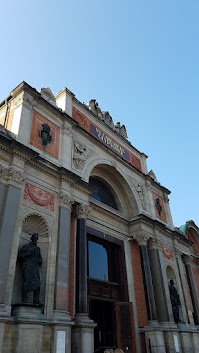
Ny Carlsberg Glyptotek is a museum that has classical sculptures from Roman and Greek times as well as some ancient Egyptian and some modern French and Danish works. You pay admission and there are restrooms and lockers in the basement floor. As you head down the stairs to there, these two statues shown below welcome when you first enter the museum. As I mentioned in my previous post, I came on Tuesday, which they charge no admission though you still have to pay to enter the special exhibit. Or, come visit on Thursday when they open 4 additional hours later into the evening (22:00).

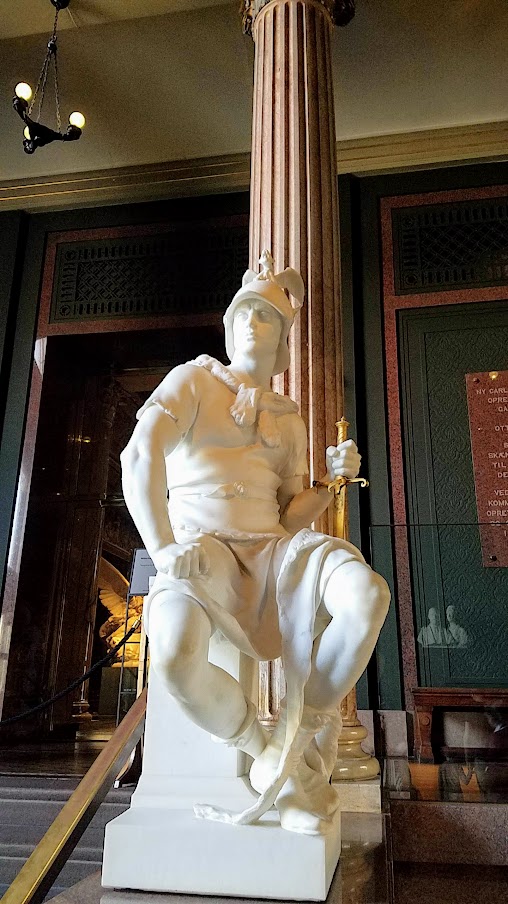
Some of the most famous pieces you may find in Ny Carlsberg Glyptotek include the bronze works of Edgar Degas, including Little Dancer of Fourteen Years. The original sculpture has a real bodice and tutu and ballet slippers, and apparently even a wig of real hair, though it is hard to tell since everything is covered in wax except for the ribbon in her hair and the tutu (the tutu varies depending on the 28 bronze repetitions of this sculpture out there).
What is particularly meaningful about this sculpture to me was the historical reactions to it when it first came out, and probably still now, in that the girl isn’t classically pretty – some even compared her to a Aztec monkey and that her face was hateful or even criminal like. How terrible is that? Also yes he used a real person as the model.
Back then, ballet dancers came from the lower classes and weren’t considered elite like now with people paying for training to better their children and ballet seen as a fine art, versus then when they paid the dancers as background dancers to the opera. Also think about how they wore form fitting clothes versus Victorian dress at the time – ballet was a way out of poverty, but also besides dance could include “back door dealings” with sponsors.
I could imagine the real girl who inspired this may not be loving dance or this job as a future prostitute – and as Degas thought of himself as a realist, perhaps he just was capturing this. As an aside, apparently he has later drawings and works that round her out a bit and is bit more on the rounder, softer side then this initial cast – he just never got to complete it.
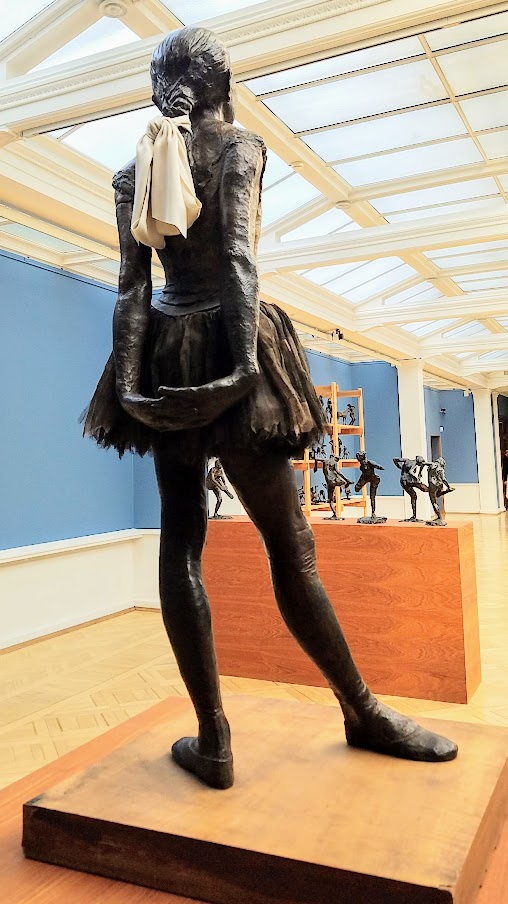



Ny Carlsberg Glyptotek has also one of the largest collection of French sculpture August Rodin in the world. You’ll find for instance the iconic Auguste Rodin The Kiss. I never had any particular fondness for the sculpture when I saw photos, but seeing it in person was a different story. I probably walked around it several times because wherever I stood it looked and felt differently to me. It is mesmerizing. From some angles, the kiss was soft and romantic, from others strong and passionate, sometimes it was him kissing her, other times vice versa.

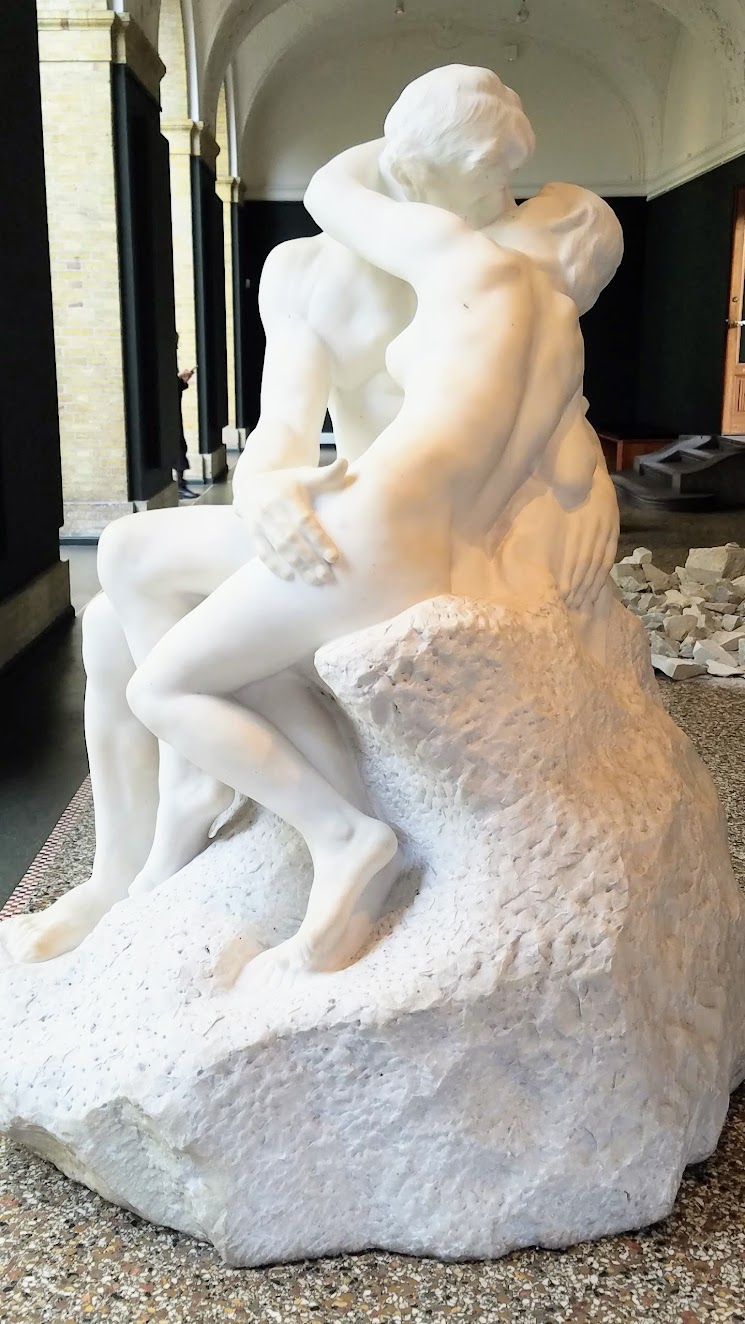
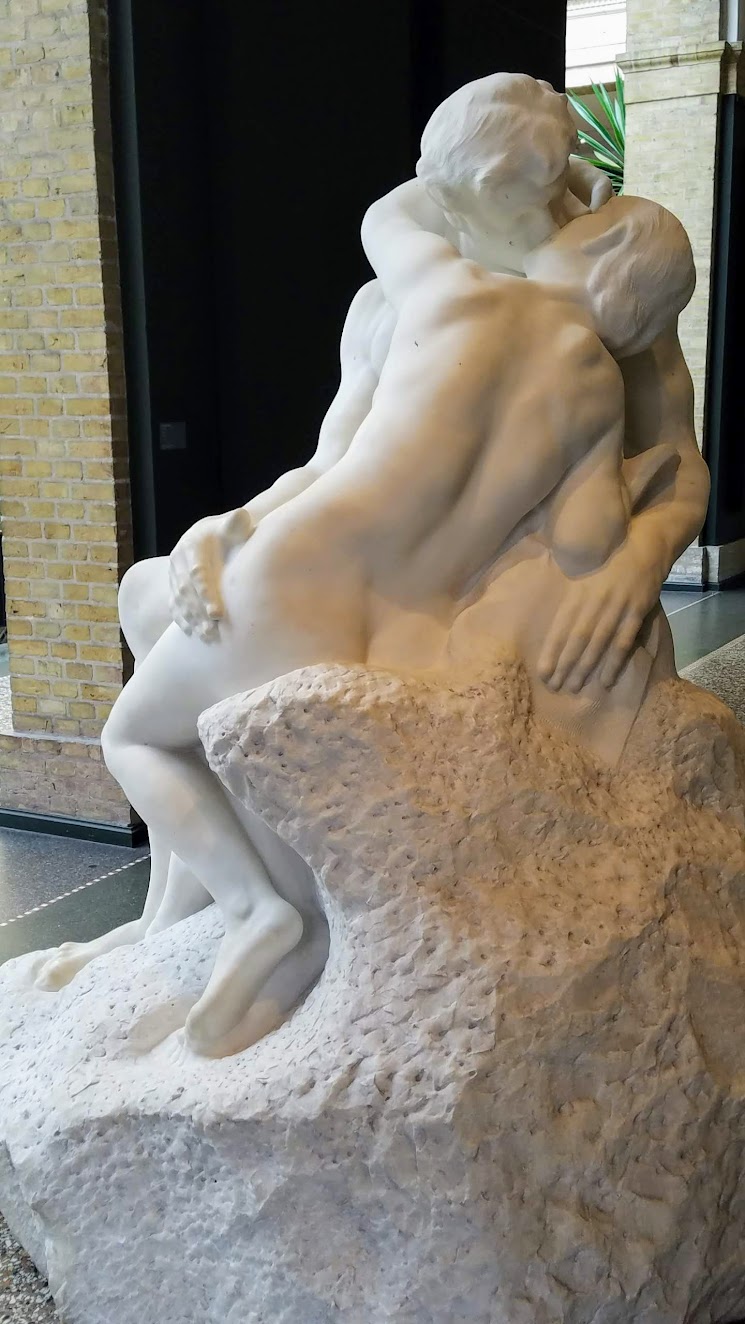
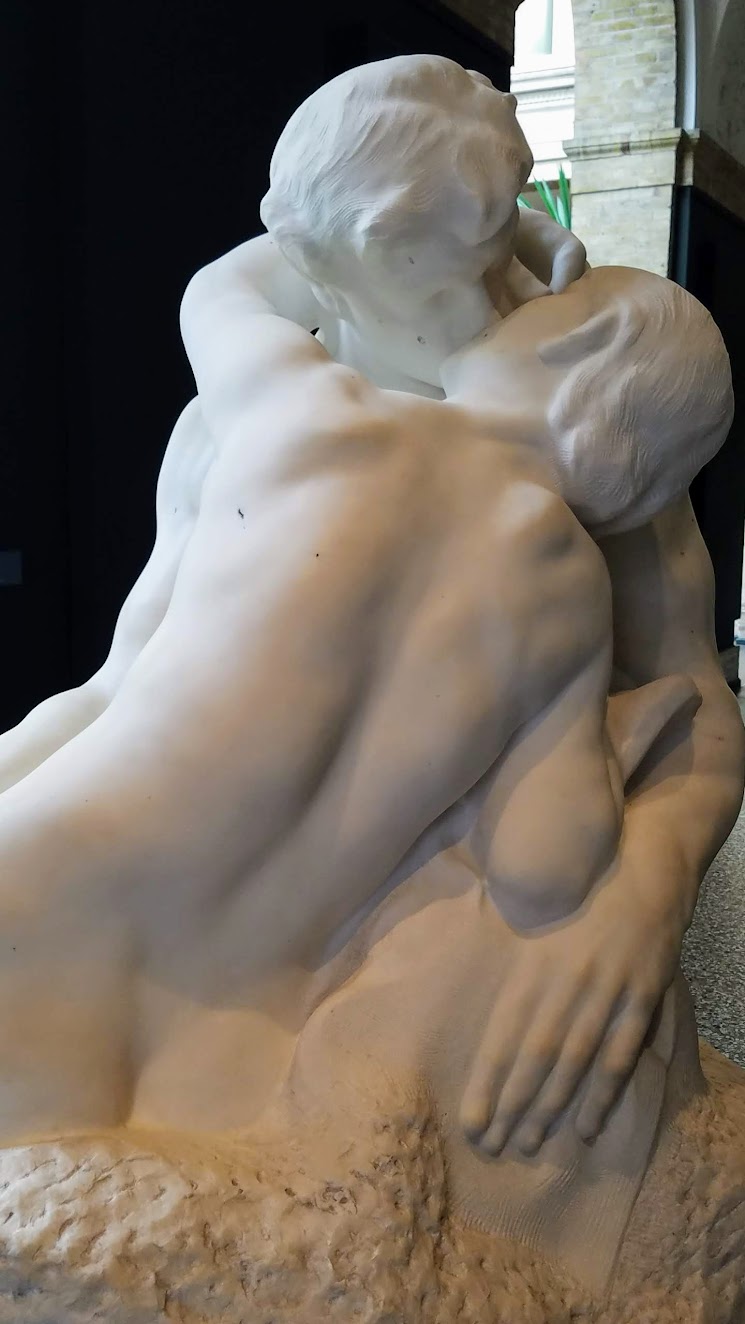


You’ll also find The Thinker both in large and small form – the larger one is outside in the garden. This famous sculpture is a contrast of a man lost in thought even as his strong physique implies a man powerfully capable of action.
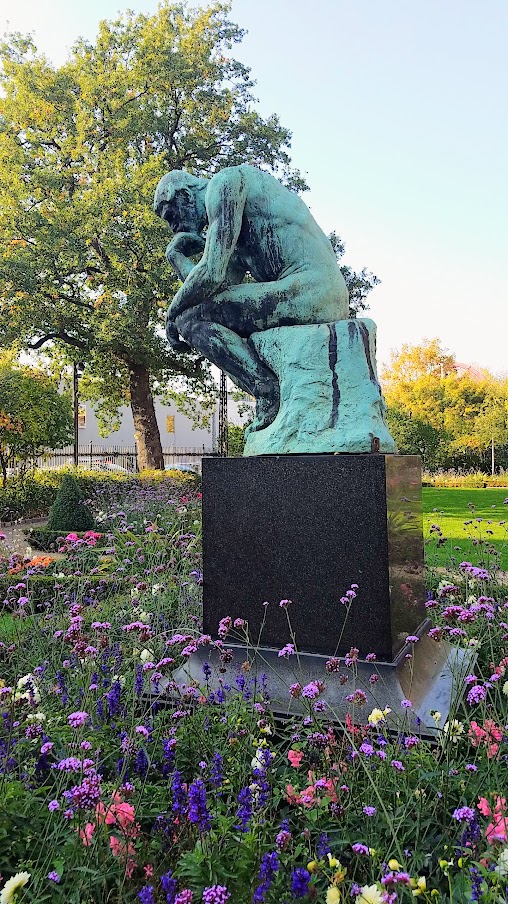

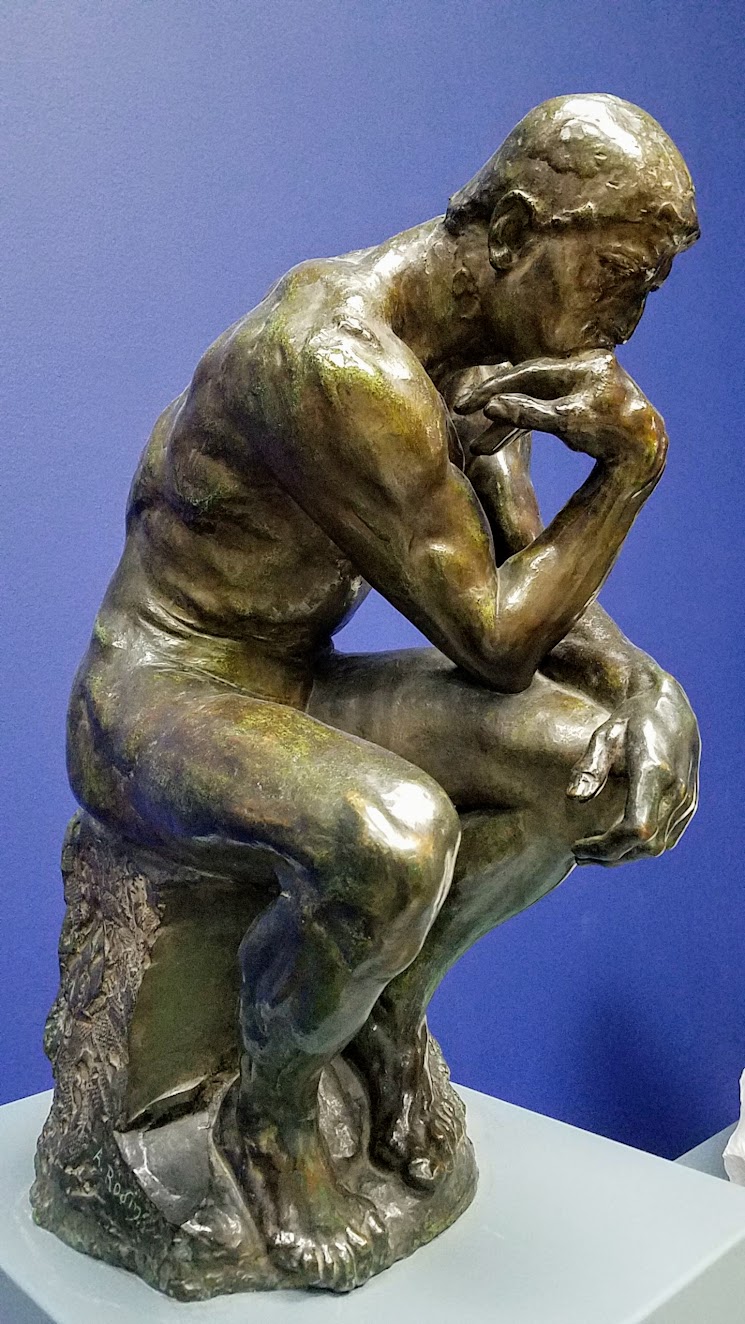
Ny Carlsberg Glyptotek was built to house the collection of Carl Jacobsen (son of the founder of Carlsberg Breweries) when he ran out of room in his own house museum which he opened to the public. So the museum was designed to help showcase known existing works in a collection. You can tell this was taken into account in designing and placement of the various artwork, where the building structure helps frame some of the pieces, such as through doorways, or open cutout areas as you descend stairs.
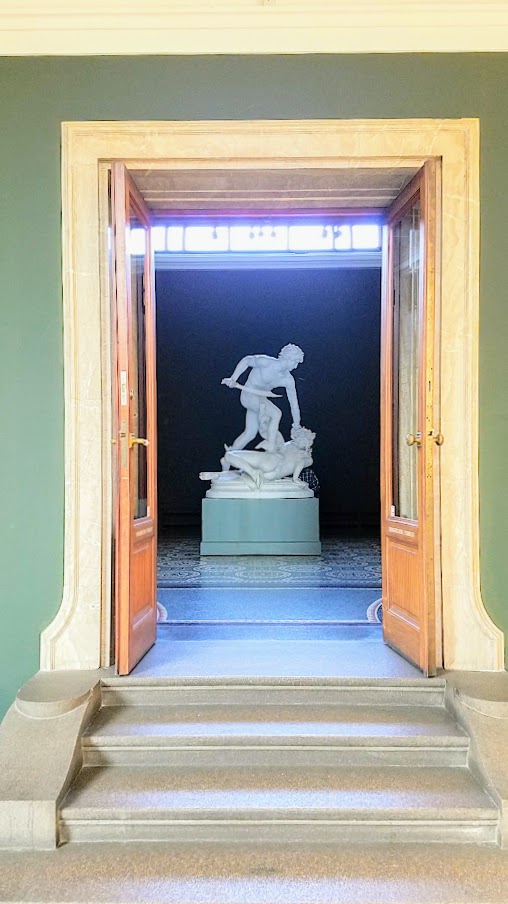


The different colors used for the walls, and the ornate ceilings and trim, also seem to frame sculptures.

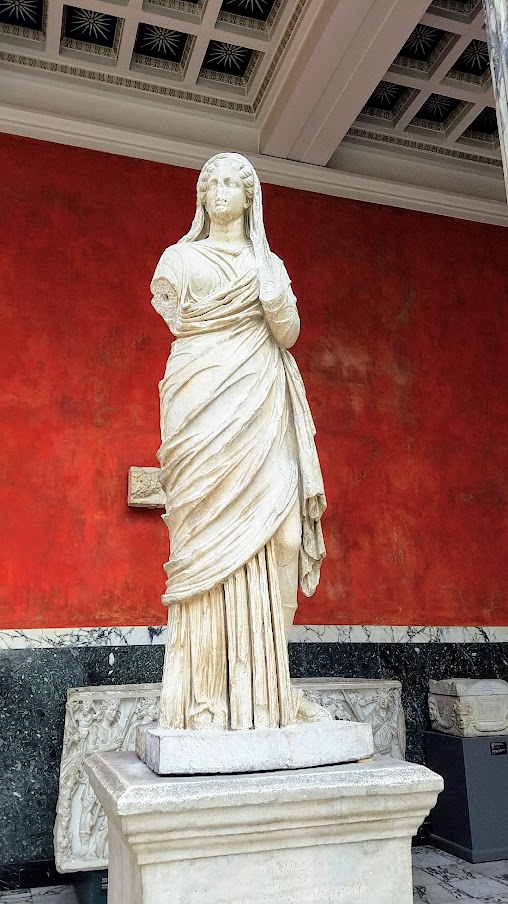
How intense is this sculpture, Perseus Slaying Medusa, by Laurent-Honoré Marqueste (1903)? Notice the incredible ceiling of the room behind him too.
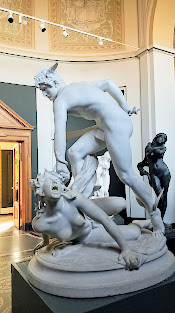

Also intense: The Prodigal Son by Ernst Henri Dubois (1909). It made me really wish there was a book or audio guide to hear the story behind the sculpture’s moment in time captured here – google later told me this is showing the return home, per the parable in the Bible, about forgiveness and being lost then found. Thank goodness despite no guide the museum labels everything well and offers free wi-fi.
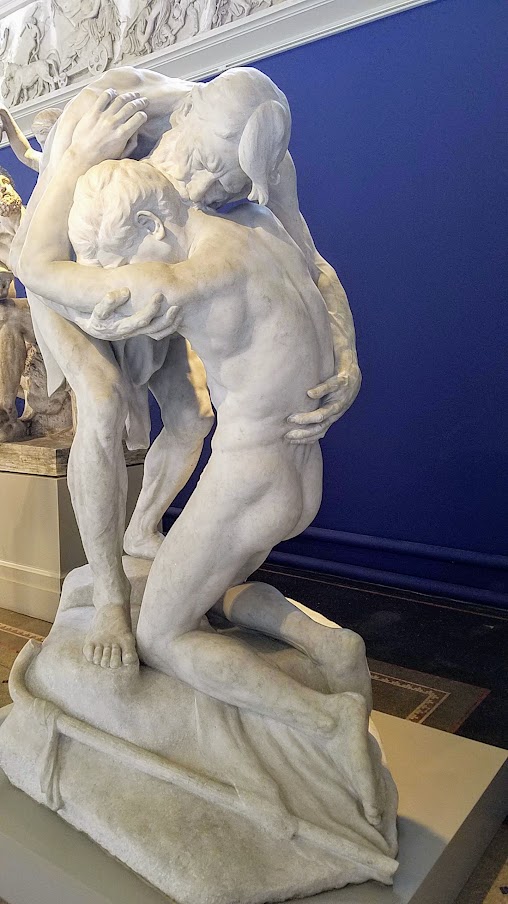

Others were breathtakingly beautiful to me in the evocative feelings they represented, like here Felix Charpentier’s Shooting Star 1896 (the soul after death), when you see it in person – the photos I took don’t fully do these justice.
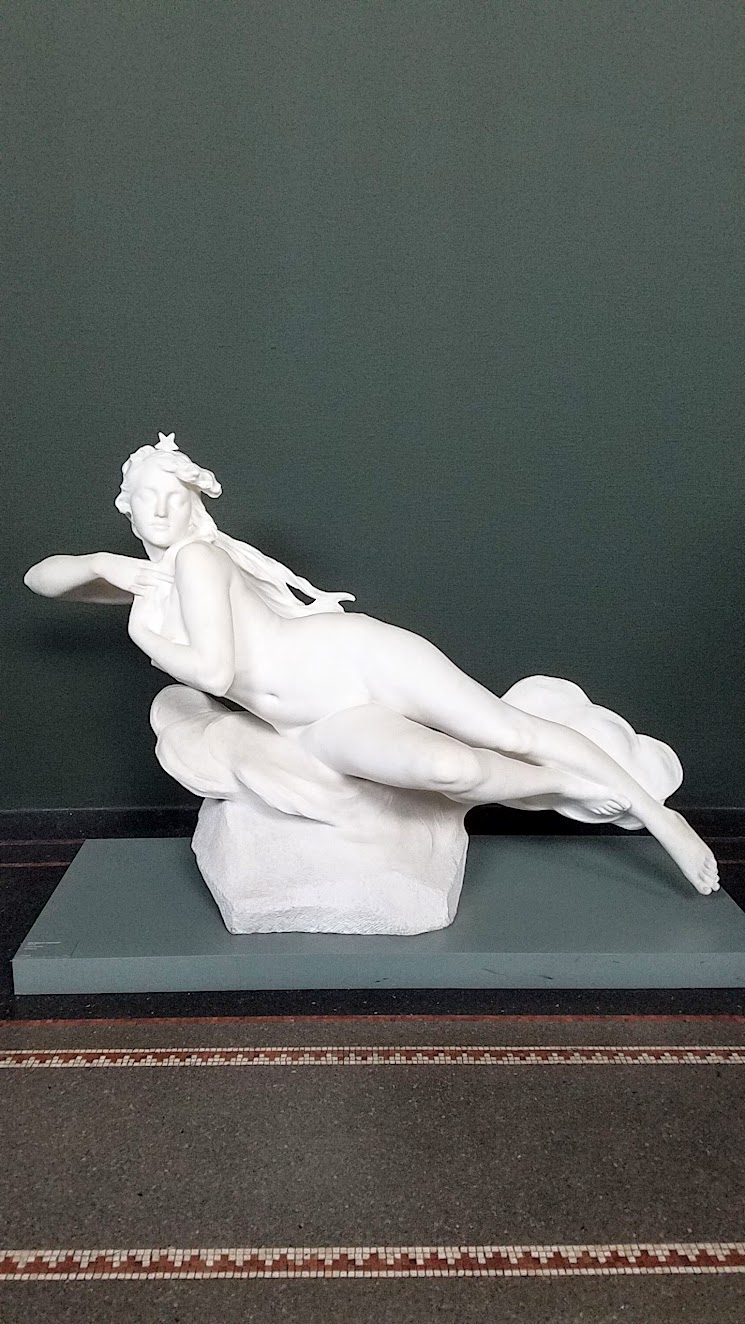
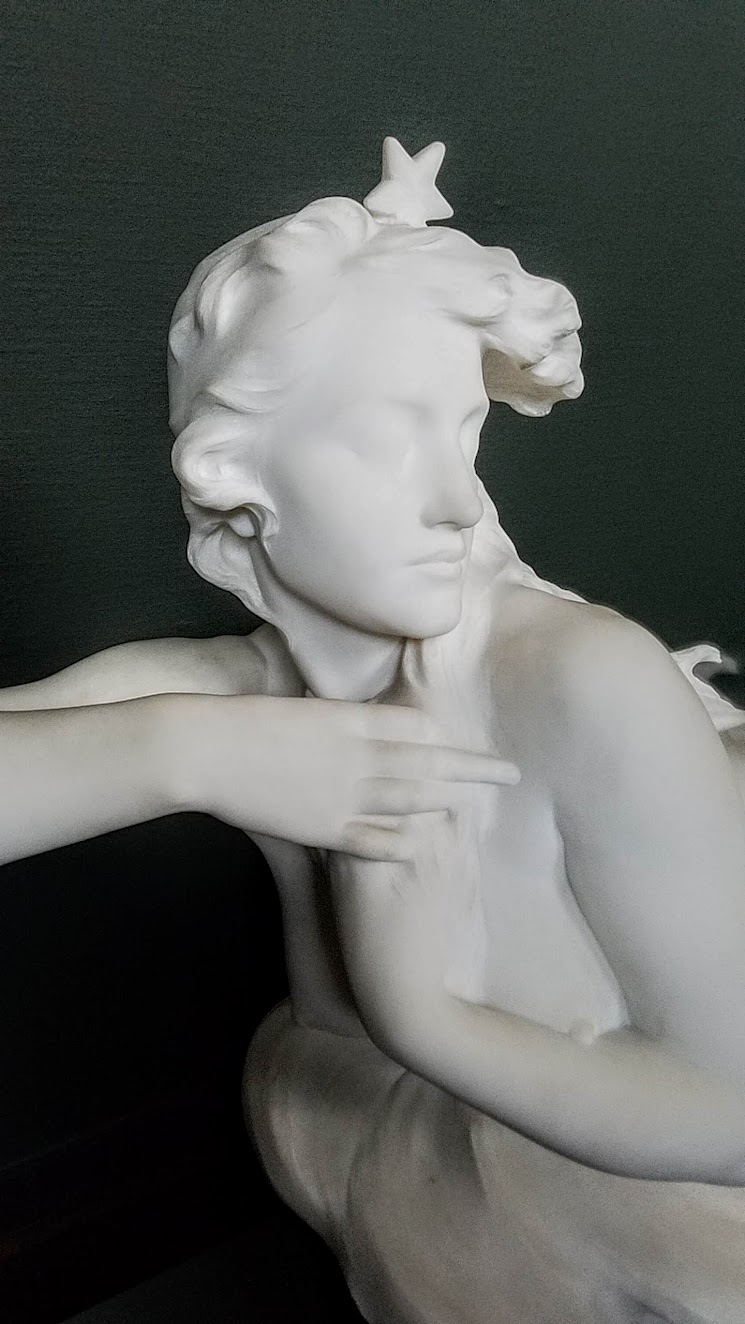
Or here is the quieting Memory by Antonin Mercié (1883-1885)
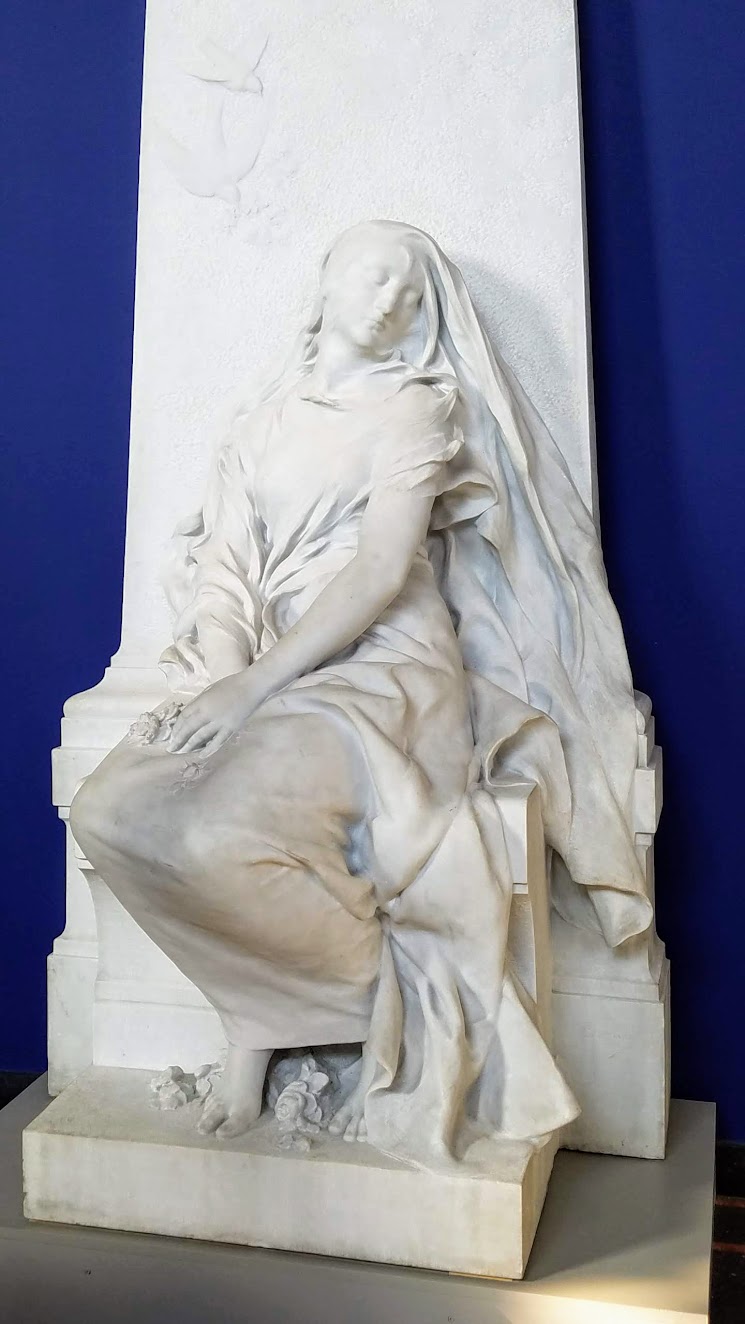

Ok, enough French sculptors. Here are friezes by Danish sculptor Hermann Ernst Freund’s Fate (1833) and Reunion (1832-36)

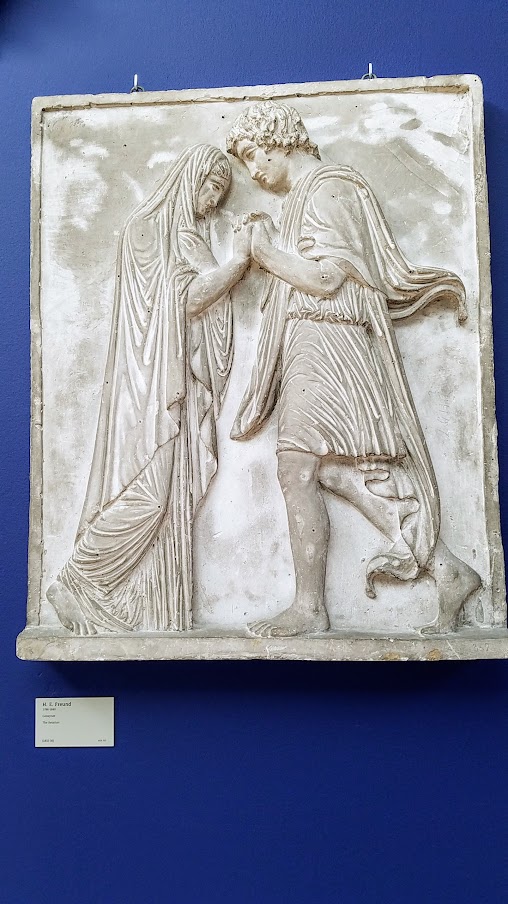
Here are examples from two other Danish sculptors, Jens Adolf Jerichau’s Little Girl with a Dead Bird (1871), and Death of a Maiden by Rudolf Tegner. Hm, maybe it’s me that like these slightly melancholy expressions in the arts.
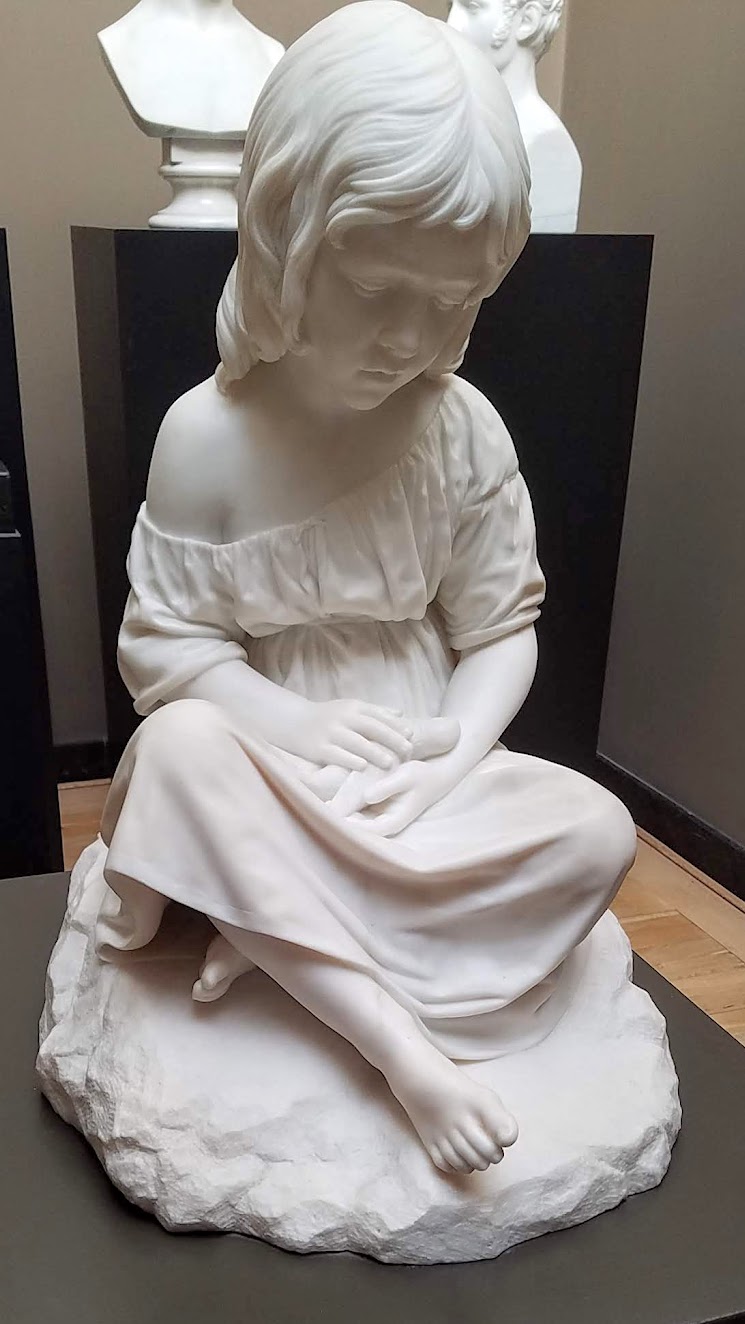
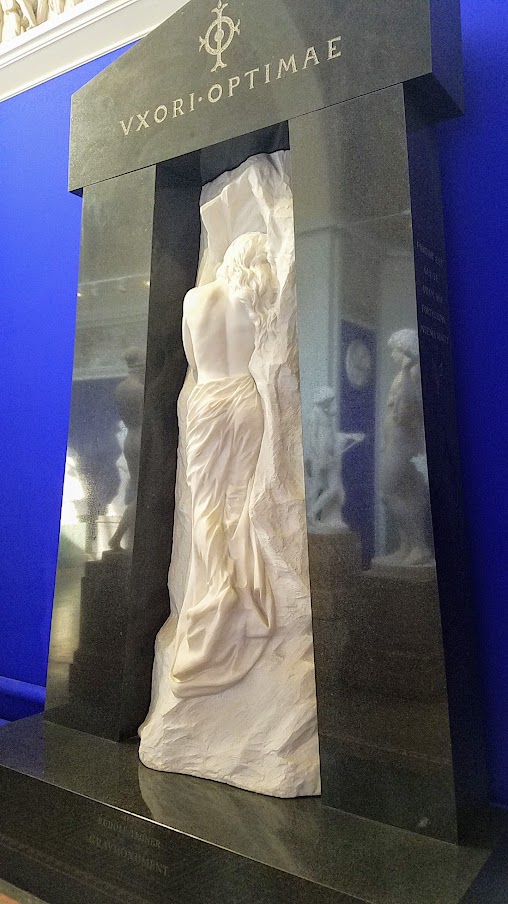
Finally, I wrap up with Danish sculptor’s Vilhelm Bissen’s judgy Danaid and Stephan Sinding’s The Oldest of the Line (1898) and Adoration (which you see in the background) which I enjoyed the contrasting placement of the youth and experience between the two works.

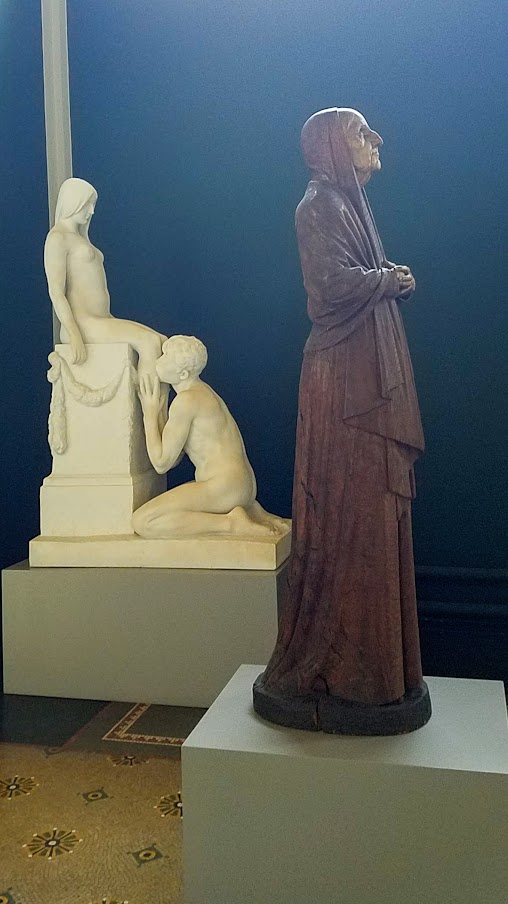
One bonus of Ny Carlsberg Glyptotek unlike Thorvaldsen’s Museum is that it has a cafe where you can get snacks and beverages, like shrimp or salmon open faced sandwiches, beer or wine or coffee, and what I had was this tasty non-alcoholic beverage, a homemade Yuzu lemonade. This was really really delicious!


Thorvaldsen’s Museum
Technically, this could also be thought of Danish sculptor Bertel Thorvaldensen’s Mausoleum, since he’s buried in the middle of it in the courtyard. All the sculptors here are by him, including this self portrait
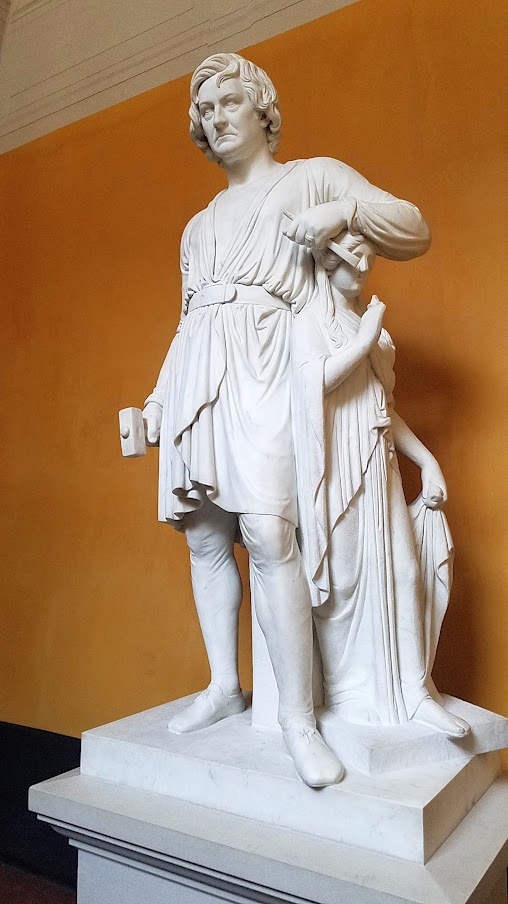
You’ll notice he has a very specific neo-classical style that generally depicts Roman mythology. For instance, here is the sculpture Mercury about to kill Argus. The backstory is Jupiter was having an affair with a nymph so his wife Juno turned her into a cow and had a many eyed giant named Argus guard her. Mercury, shown here, son of Jupiter and also known as the messenger god, was sent by his father to rescue the priestess. He offered to play his pipe to the bored Argus, tricking all of his eyes to close as he fell asleep, and now Mercury is drawing his sword to kill Argus. You can see his facade of innocently playing the flute beginning to drop as he is slowly drawing the sword.
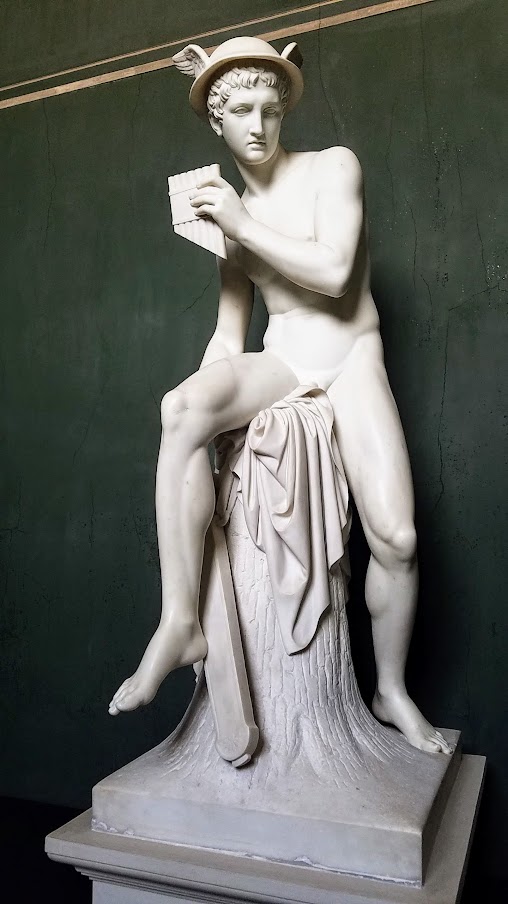

One thing I really liked about Thorvaldsen’s Museum is that the side rooms, which was a series of small rooms all along one hallway, had laminated 8.5×11 pages in multiple languages that described the handful of art pieces in each small room. There is also a free audio guide so that you can listen to more details for any sculpture that had a number. While the neo-classical style which is a bit more posed and has less action didn’t have the same draw for me as what I had seen in the various sculptures of Ny Carlsberg Glyptotek, having all the extra context went a long way here at Thorvaldsen’s Museum. Be prepared to provide some sort of ID in order to check out the audio tour – although I carry my passport of course being in a foreign country I was glad I also had my driver’s license to give that for the audio equipment trade.
Some other cool classical statues by Thorvaldsen: Jason with the Golden Fleece; Hebe, the goddess of youth, whose job is to pour the elixir of immortality for the other gods (at least until she marries Hercules and the job goes to Ganymede); the gods’ cupbearer Ganymede Filling the Cup, aka with the elixir of immortality; Cupid Triumphant examining his arrow of love; Ganymede with Jupiter’s eagle giving the eagle that once abducted him to the gods a sign of forgiveness with a sip of the elixir of immortality

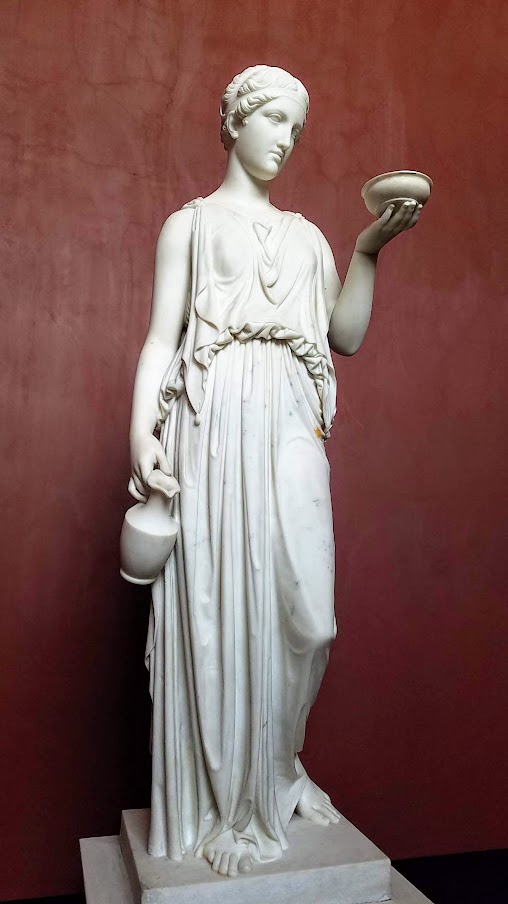
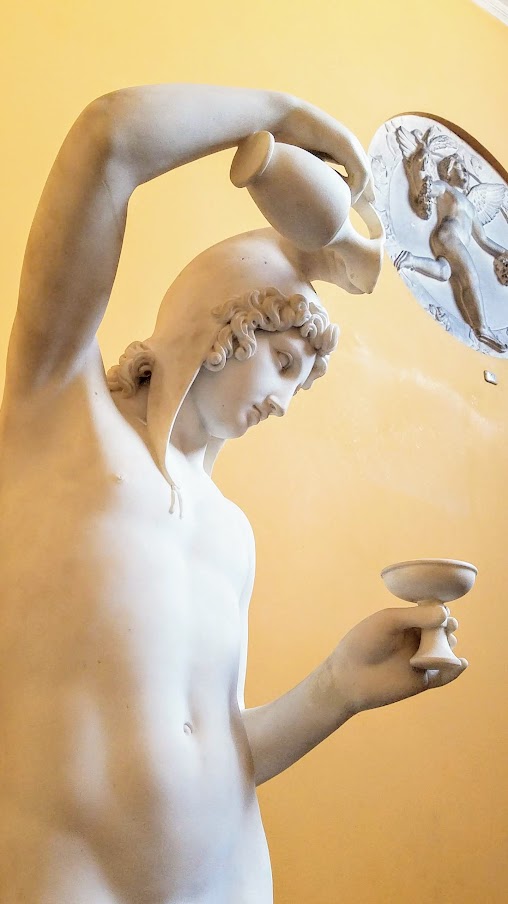


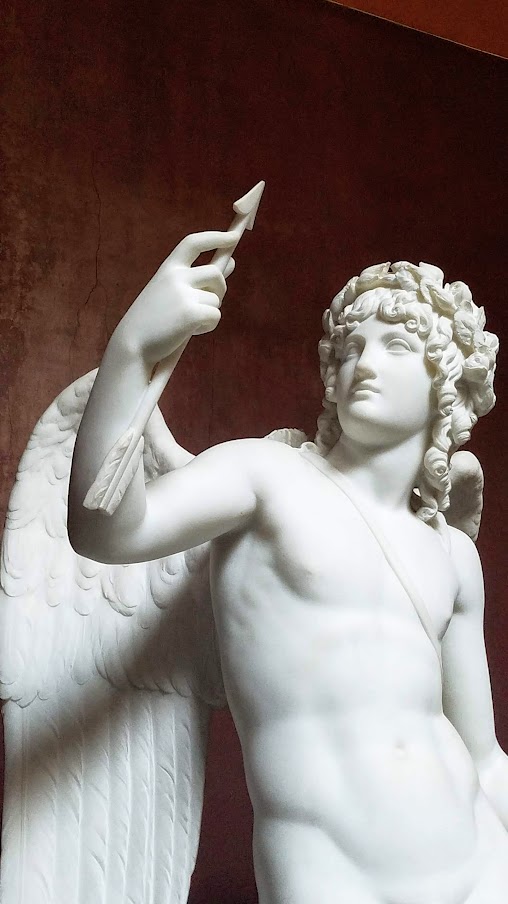
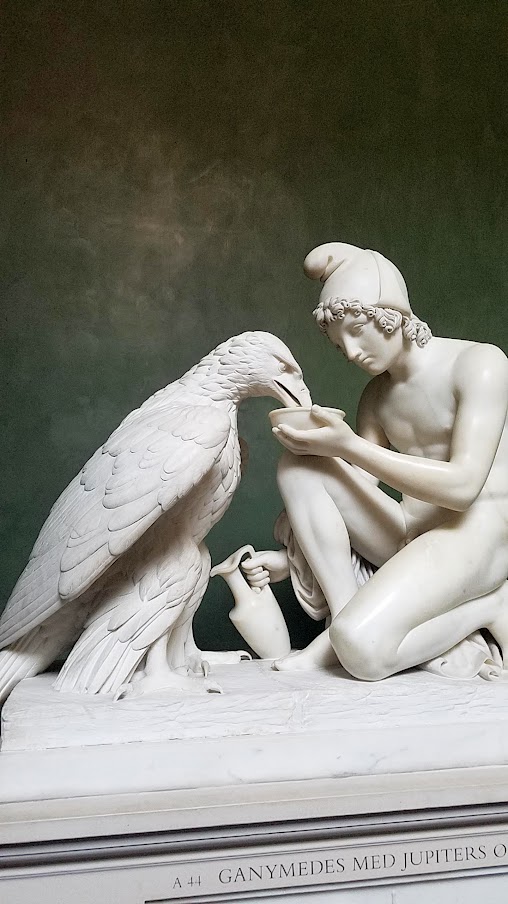

While each small gallery room had a main statue usually, there were also often reliefs along the wall like this that also had their own stories. Here was my favorite that I saw, the two halves of a 24 hour day, Thorvaldsen’s reliefs of Day and Night

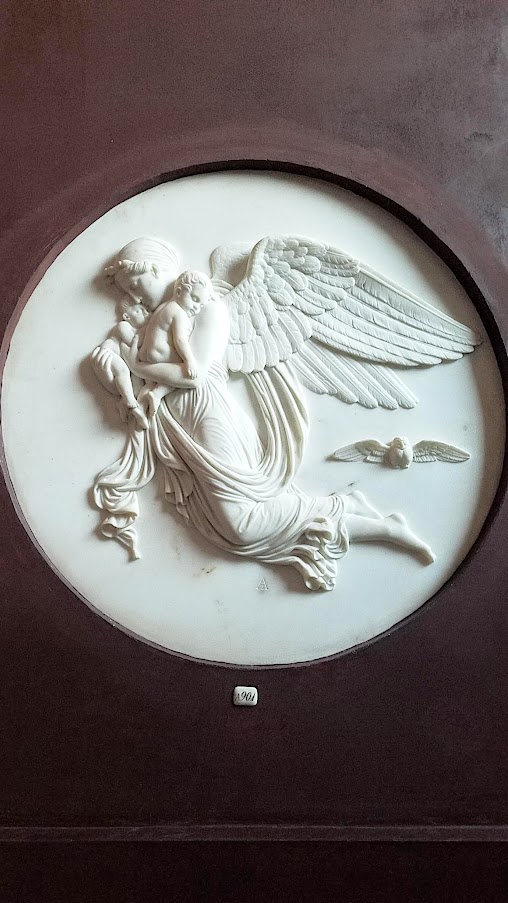
If you’ve watched Dr. Who’s episode of episode called “Blink” – I highly recommend watching the individual episode even if you haven’t watched any other before it stands on its own – you’ll particularly appreciate how I leave you with some of Thorvaldsen’s angels.

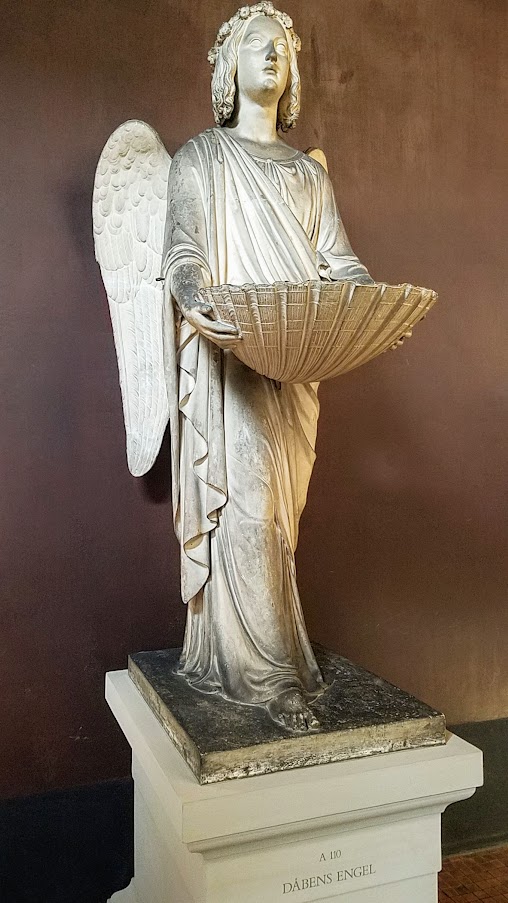
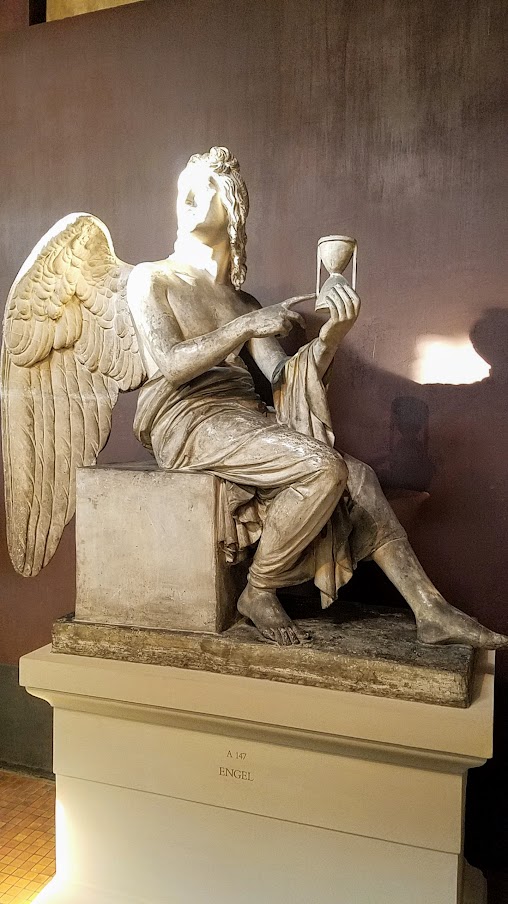


And then the ultimate selfie when you are rich – commissioning a statue of yourself being sassy. This is the Russian Princess Maria Fjodorovna Barjatinskaja who came with her husband to model for this sculpture, but even though she came in 1818 to model it and the sculpture was created 1821-25, it was never delivered – instead a copy was sent after her death in 1858 after her family demanded it (that one is now in a museum in Russia).

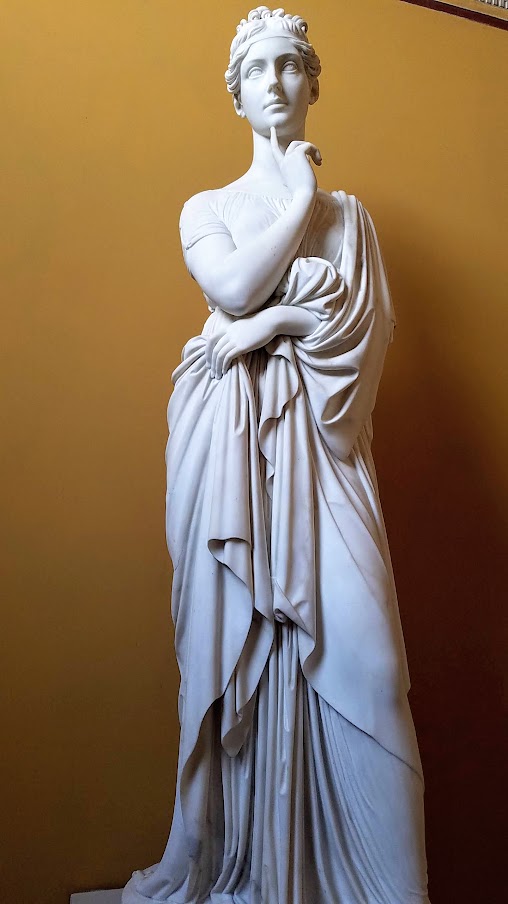
I did enjoy the museum, but it did get a little surreally overwhelming after a while since every piece here is from the same artist – I liked the diversity of Ny Carlsberg Glyptotek better, but would still recommend this museum as long as you know that you may get the same feeling of sameness after a certain number of rooms of pieces. But, when it came to understanding the story behind various sculptures Thorvaldsen’s Museum was much stronger so that the artwork had more context, thanks to the laminated pages and audio tour.
I enjoyed these two visits to both museums, but that was it in terms of museums in Copenhagen, even though there multiple other great museums showcasing art. Instead, as I’ll share in my future Travel Tuesday post, I went historical with a visit to Rosenborg Castle.
Have you heard of any of the sculptures I’ve shared before, which one was your favorite that I mentioned?
More from my adventures in Copenhagen (will be linked once posts are live)
- Restaurant Krebsegaarden
- Lunch at Restaurant Palaegade
- Free things to do in Copenhagen
- Lunch at Geranium
- Ny Carlsberg Glyptotek versus Thorvaldsen’s Museum
- The food market of Reffen
- Visiting Rosenborg Castle
- Visiting Church of our Savior and Tivoli








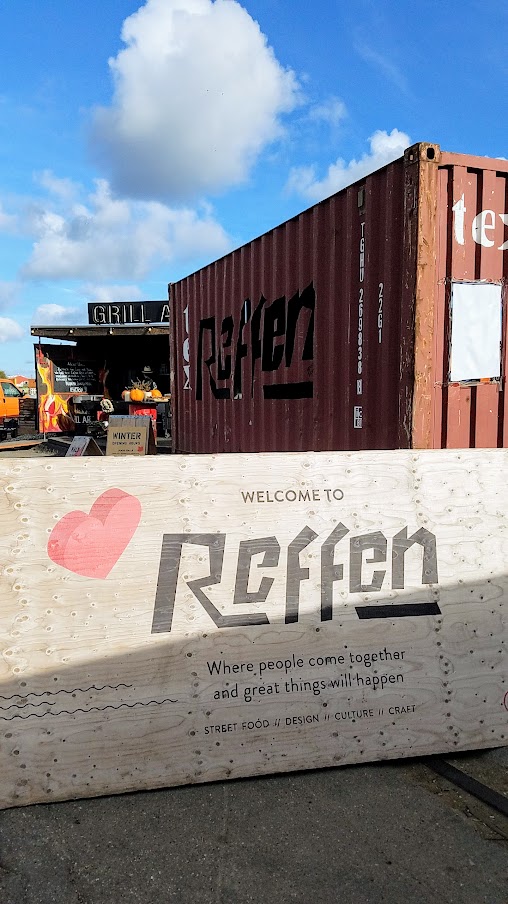



I think I could have spent all day at this museum, based on your descriptions. I’ve heard of quite a few of these, but really love your descriptions and initial reactions to seeing the Little Dancer of Fourteen Years in person.
The diversity of Ny Carlsberg Glyptotek sounds more up my alley as well. I love the pieces in that museum that you spotlighted too!
Wow, both look impressive.
Interesting stuff. Great to see all the pictures too. Thank you for sharing.
I love getting lost in museums. The prodigal son is such a moving sculpture – breathtaking. Thank you for sharing!